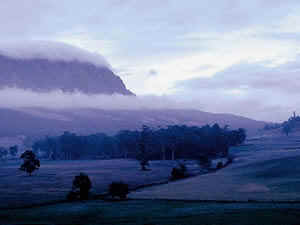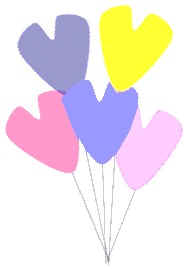For information regarding
this book CLICK HERE
INTRODUCTION
Once an ENT
Specialist who was examining a young man asked in jest: "I’m going
to give you a little test. Now if I take one of your ears off, what would
happen?"
Patient:
"I wouldn’t hear half as well."
Doctor:
"Good. Suppose I took both your ears off, what would happen?"
Patient:
"I wouldn’t be able to see."
Doctor:
"How’s that?"
Patient:
"I wouldn’t have anything to hold my glasses up with!"
You laughed at the
above exchange, taking it for a joke. But consider the conclusion of the patient
again. Does it not make sense? Each part of your body, apart from its assigned
function, serves other purposes as well. Of course, if you are an able-bodied
person, it is possible that you do not realize the number of inconveniences
faced by those who are physically handicapped – both on the personal and the
social levels.
There are more ‘disadvantages’ to a ‘handicap’ than meets the eye.
People who are sighted, for example, cannot fully comprehend the travails of
those who are physically blind. And more so when the sightless are trained to
perform ’normally’ in life. Only those closely associated with
"disadvantaged" persons appreciate the ‘superhuman’ efforts that
the latter make not merely to survive, but to excel in life.
This book is about people who face innumerable ‘disadvantages’. They are the
true heroes on the stage of life, often having to perform with "props"
and "prompters", but generally staying away from the spotlight. They
are exemplary, inspiring individuals to all who witness the inner power that
drives their minds and hearts to transcend their ‘physical’ boundaries, and
bring joy to their own lives as well as those of others.
More specifically, the ordinary heroes and heroines we are referring to here are
those who suffer physical disabilities and deficiencies – blindness, deafness,
muteness, low intelligence, loss of limbs, depression, those who are
psychologically, intellectually, socially and economically disadvantaged...,
either from birth or through accidents. For them, what the world considers their
handicaps and ‘liabilities’, are but the springboards to achievement and
self-fulfillment. Through ingenious methods these ‘ordinary’ heroes and
heroines, let their spirits soar to unimaginable heights. Their ingenuity,
courage and determination fill us with awe and admiration.
The speciality of these ordinary ‘heroes’ is that they began their heroic
life as ‘zeros’ – not worthy to stand up and be counted, or who started
their climb to "success" in life at point "zero" – from
scratch, with nothing to help them on (save God’s grace), and even nobody to
encourage them on. But in their own way, and in their own time, each of them
rose to become a "hero" in his or her way, in his or her own world.
There are
‘stories’, too, of people who have been pillars of support to the
‘disadvantaged’ and have nurtured them to greatness. They serve as worthy
models of the service expected of members of the human family – to which we
all belong.
The first part of Zero To Hero describes the power and progress of
‘disadvantaged’ people from different parts of India. These human-sketches
have been collected over the years from newspapers and magazines, and adapted or
re-told. The anecdotes speak of inspiring individuals at a particular stage of
their life. Unfortunately, there are no ‘follow-up’ articles to trace their
further progress, or the fulfilment of their desires or dreams, but we can
presume that their ‘stories’ do have happy endings.
The second part is a collection of historically well-known
"handicapped" personalities from around the globe. The Third part
contains stories about overcoming limitations and hurdles that are part of the
‘winning game in life, from ‘anonymous’ authors.
The gallery of portraits of such exemplary persons presented in Zero to Hero
is meant to serve as a source of inspiration not only to those with
‘handicaps’ but also to those who are "able-bodied". If a person
with a ‘disadvantage’ can show such great courage and determination, is not
much more expected of those who are gifted with good physiques and health?
We hope that this book will help those who are of "sound health and
mind" to have "deep compassion" for those who are not. We also
hope that those who are physically challenged will derive greater grit and
determination from the examples of those who are or have been "in the same
boat" as they. It takes self-confidence and courage to weather all storms
and cross new horizons.

We only see a little of the ocean,
A few miles distance from the rocky shore;
But oh! out there beyond – beyond the eye’s horizon
There’s more – there’s more.
We only see a little of God’s loving,
A few rich treasures from his mighty store;
But oh! out there beyond – beyond our life’s horizon
There’s more – there’s more
EXTRACTS
FROM THE FIRST FEW PAGES
PART ONE
ON HOME GROUND
1. COLOURFUL
PERSONALITIES
Armless
Artist
Sheila, a
woman in her mid-20s, is the eldest of five children in a poor
factory-worker’s family in Uttar Pradesh. In 1977, when she was about four
years old, Sheila lost both her hands in a train accident that killed her
mother, with whom she was travelling.
As a child, she saw her friends go to school, scribble in their notebooks and
draw houses and flowers. She began to imitate them. Except that, with no hands,
she had to first learn to work with a pencil held between her toes. Seeing her
perseverance, her father got her admitted to the local primary school. That was
the impetus the physically disabled girl needed to make a mark in life.
After completing
her intermediate education, the enterprising girl earned a Bachelor in Fine Arts
degree and then decided to take up painting as a career at the National Lalit
Kala Kendra (Art Centre) in Lucknow. People gawk at her as she sits down to
paint, nonchalantly adjusting a brush between the toes of her left foot. And a
trifle self-consciously, she says, "For me, this makes no difference. In my
childhood I used to hold a pencil with my toes. Now it is a brush. That’s
all."
Talking about her success at the Centre, she confided
to a magazine reporter, "I vowed to become an artist when I grew up. This
was a big challenge for me. Hard work and determination brought me here and, in
the process, I often forgot that I had a handicap. Now it makes no
difference." Sheila has participated in many state-level art exhibitions.
She is equally at ease with both mediums, oil and water-colour. Her canvasses
fetch around Rs 4000 each. Sheila paints not only for pleasure, but also to
support her family.
Palsied
Painter
Chirag Shah,
22, held an exhibition of his paintings in September 1998. His thirty sketches
and five oil paintings are childish, but undoubtedly monumental. For Chirag is a
victim of chronic cerebral palsy from his birth. He cannot eat, stand, walk, or
even lie down without help. His is "the story if an abnormally grand will
power, indefinable strength, and courageous zest for life. It’s the story of a
tragedy he won’t let it be."
Dr S. R. Apte, a lecturer in Occupational Therapy remarked: "He’s strong
and really intelligent. With the kind of limitations he has, it would have been
impossible for anyone in this world to accomplish what he has." The
paintings are a reflection of his strength more than his artistic imagination.
For it is not easy for a cerebral palsied to do anything that involves muscular
activity.
Somebody said
that it couldn’t be done,
But he with a chuckle replied
That "may be it couldn’t" but he would be one
Who wouldn’t say so till he’d tried.
So he buckled right in with the trace of a grin
On his face. If he worried he hid it.
He started to sing as he tackled the thing
That couldn’t be done, and he did it.
Somebody
scoffed: "Oh, you’ll never do that;
At least no one ever has done it."
But he took off his coat and he took off his hat,
And the first thing we knew he’d begun it.
With a lift of
his chin and a bit of a grin,
Without any doubting or quiddit,
He started to sing as he tackled the thing
That couldn’t be done, and he did it.
There are
thousands to tell you it cannot be done,
There are thousands to prophesy failure;
There are thousands to point out to you one by one,
The dangers that wait to assail you.
But just
buckle right in with a bit of a grin,
Then just take off your coat and go to it;
Just start in to sing as you tackle the thing
That "cannot be done," and you’ll do it.
Edgar A. Guest
2. REACHING HIGH
Blind
Mountaineer
Yahya
Sapatwala is a 30-year-old junior lecturer at the District Institute for
Education and Training, Ahmedabad. And he is blind in both eyes. "They are
light bulbs that can’t glow without electricity," he jokes about his dead
optic nerves. He is a Visharad in music, and is doing his doctoral studies
researching Gujarati proverbs. He is interested in literature and writes poetry.
However, Yahya is no homebird. He is a strikingly adventurous outdoors man! He
walks so fast on familiar ground that his friends and family members get
worried. "Though we are sighted, he performs better than us in most
activities," confided a colleague.
Yahya took part in a couple of trekking expedition organised by the Vadodara-based
Nature, Adventure and Sports Institute, in early June, 2000. Yahya trekked to
Beas Kund, the 12,000 feet point at Manali in the Himalayas. There, he also
successfully took part in rappelling, para-gliding and river-crossing.
Recollecting his Beas Kund experience, Yahya said, "Up there, after 10,000
feet I felt oxygen was getting less and less. But at no point of time did I
think that I won’t make it to the top." It took the group five days to
make the grade, with three of them dropping off before the target. Yahya did lag
behind others, but the group was never forced to reschedule the camp. Said the
organiser, "We thought it would be tough for him. But his spirit is
indomitable."
"I want to donate my eyes. The eyeballs will help someone to see, though
they were of no use to me," he says with equanimity.
Weak-footed
Climber
Bhupendra Modi was born
with both his feet turned backwards, in 1961. After about half a dozen surgical
operations the anomaly was corrected, but Bhupendra has to wear shoes to support
himself when he walked. He lived a normal life, and after school got employed as
an assistant in the office of the executive engineer, Gujarat Industrial
Development Corporation, bagging the President’s Award in 1996 for best
handicapped employee from Dr S. D. Sharma. His adventurous spirit did not allow
him to rest content with a desk job, and he won the Yuvak Sanskrutik Vibaug
(Youth Cultural Wing) adventure award from the Gujarat government for his
mountaineering adventures.
In 1998, the 37-year-old Modi undertook a 14-day trek across the Alps in
Switzerland. He successfully scaled the 10,000 foot high Mount Jungfrow,
generally known as the "Top of Europe", at freezing temperatures of
minus 5 degrees centigrade. He is now planning a trip to the North Pole.

Lowly Sherpa
In the 1970s Peter
Habeler from Austria and Reinhold Messner from Italy initiated speed climbing in
the Alps. Soon after, German climbers raced up the Eiger Face. Then speed
climbing took off in the Himalayas with the rapid ascents of K2 and broad peak
in Pakistan by French climber Ben Voits.
On May 21, 2000, Babu
Chiri Sherpa reached the summit of the world’s highest peak for the tenth time
in exactly 16 hours and 56 minutes. "If the weather had been better, with
less wind and snow at the summit, I’m sure I could have done it in 13 or 14
hours," he told his colleagues over his walkie talkie while on the descent.
Nicknamed "Heem Bhalu" (Snow Bear) because of his physical built, Babu
Chiri broke the climbing record (of 20 hours 20 minutes) set by Kazi Sherpa in
1998. Unfazed by reports of strong winds higher up on the mountain, which were
conveyed to him by other Sherpas at various camps on the Everest trail, Babu
went on to accomplish his feat.
Babu Chiri hold a Guiness World Record for spending 21 hours atop Everest. Babu
hopes that his latest accomplishment will make it easier for him to raise funds
to start schools for children in his home village of Thakhshindoin located in
Solukhumbu in the lower Everest region.
Said a veteran Italian mountaineer Sergio Martini: "Babu is extremely
strong and his record is very important for promoting specialist climbing in
Nepal. Normally, the world recognises Sherpas as climbers who only transport and
carry loads up the mountain. His record proves otherwise."
 Perspectives
Perspectives
Another
inspiring collection of thumbnail biographies from Hedwig Lewis. The theme of
this collection is the way men and women with obvious physical disadvantages
have been able to make their life worth living. So his title Zero to Hero.
In one section he gathers stories about Indian heroes. In another section he
gathers stories of people from different countries and in the last section are
stories of people who in a way won inner battles. this is a good resource for
speakers and good read for young and old. Vidyajyoti,
November 2001
LAMP FOR MY STEPS
By Rev Fr Giles Ngwa Forteh
Zero to Hero is the title
of a truly edifying and inspiring book by Hedwig Lewis. Setting out with the
intention of galvanizing the despondent to explore their latent talents in view
of getting the most out of their lives, the author presents a gallery of
"heroes", illustrious persons who were either classified as "zero" - not worthy
to stand up and be counted, or who started their climb to the summit from a
point of total obscurity ( the point of "zero") - from scratch, with nothing on
which to cling and thrust forward (save God's grace), and even nobody to
encourage and orientate them.
Defying all odds and refusing to
become impotently obsessed with their handicaps, they took the direction of
their strengths, big and small, each one in his or her own circumstance and
time, and rose to become heroes and heroines in their own way and in their own
world.
The inner power in them drove their
minds and hearts to transcend their "physical" limitations and bring joy to
their own lives, as well as those of others. Nothing in the record of human
achievements will ever be more spectacular than those cases of handicapped men
and women who, accepting themselves and putting to maximum use the little they
have, have illustrated what Dr. Alfred Adler once called "The human being's
power to turn a minus into a plus." We speak specifically of the ordinary heroes
and heroines who suffer physical disabilities and deficiencies - blindness,
deafness, muteness, low intelligence, loss of limbs, depression, those who are
psychologically, intellectually, socially and economically disadvantaged, either
from birth or through 'accidents'.
For them, what the world considers
their handicaps and deficiencies are but the springboards to achievement and
self-fulfilment. Through ingenious methods these ordinary "heroes" and
"heroines" let their spirits soar to unimaginable heights. Their ingenuity,
courage and determination fill us with awe and admiration. What marks these
achievers apart is the fact that they began their heroic life as "zeros"....
leffortcamerounais.com,
Newspaper of the National Bishops’ Conference of Cameroon,
![]()

![]()